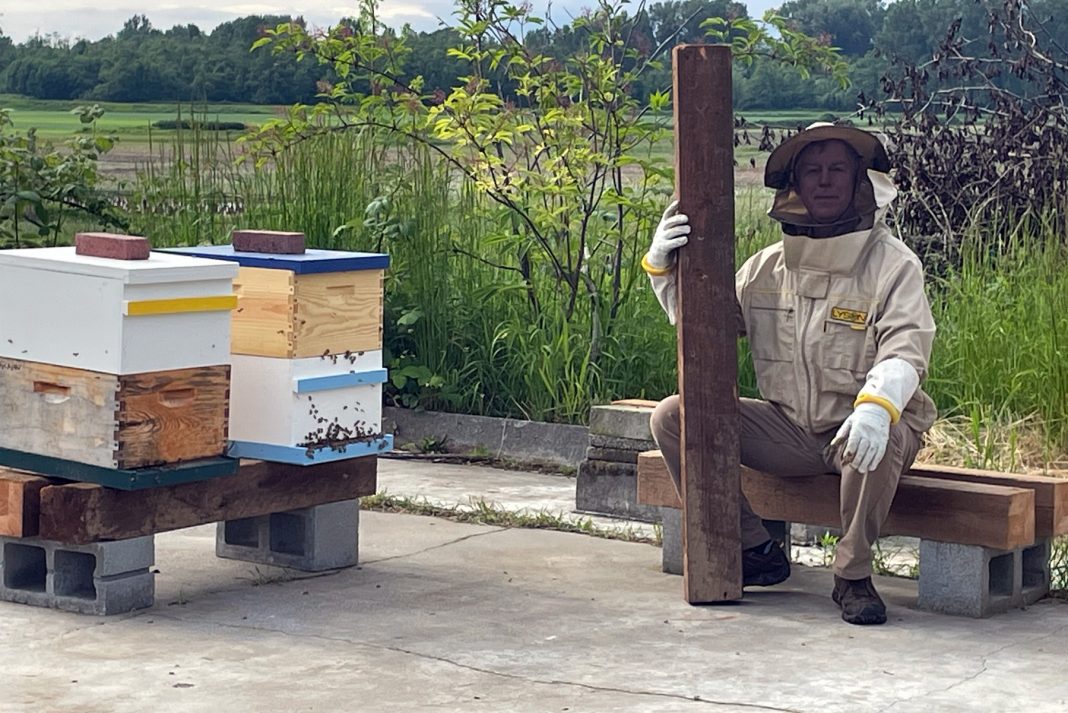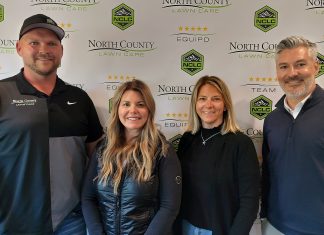As spring brings warmer weather, plants awaken from their winter slumber, open their petals and reveal the season’s flowers. A buzz in the air accompanies this feat as bees make their way flower to flower, collecting pollen to replenish the colony’s stores of honey. For the average person, we see bees as a look but don’t touch scenario. We understand they help our plants grow and make delicious honey but also that they are armed and not afraid to use their weapon. Respecting their defenses, we passively sit by while they pollinate our gardens and make their sweet product, which we add to our meals.
Then there are the Dan Dahlbergs of the world.
Dahlberg does not sit passively by while bees do all the work. Spring brings the opportunity to collect swarms, giving them a home in one of his hives in exchange for a bit of their honey. On a recent spring evening Dahlberg — with the help of his collection machine, a vacuum going into a bucket — collected four swarms. Geared up in his bee suit, with an epi-pen in his pocket, Dahlberg puts the massive swarm into a controlled environment where he can help ensure the colony’s success.
“My first year, I trapped probably 10 different swarms,” he says. “When you catch a swarm of bees, you have to have a hospital yard; you don’t want to mix them into your main apiary you’ve got all cleaned up and in good shape because you don’t know what you’re catching. You might have infested bees, they might have European foulbrood, or they might have a super high might load — they might have all kinds of problems.”
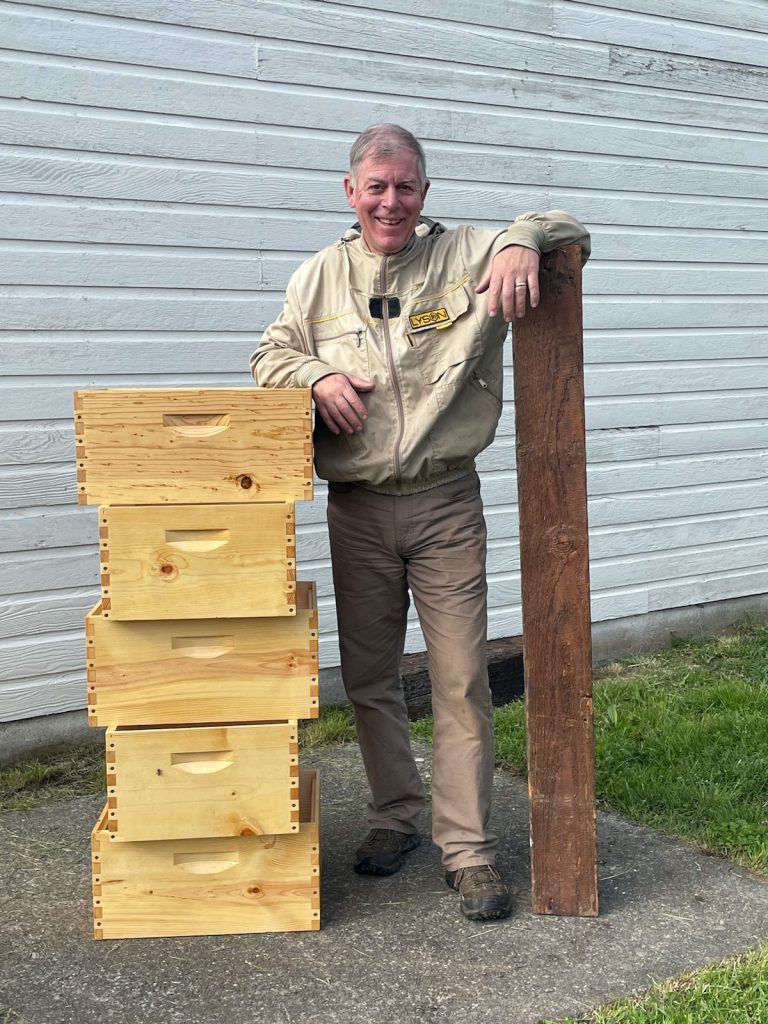
What began as an interesting hobby has evolved into a side hustle called A Bee Connection, on the verge of becoming a full-blown business. Dahlberg now offers swarm removal services, and this fall will have honey for sale. Now with approximately 30 hives in three different locations, Dahlberg has begun to see himself as a beekeeper rather than a hobbyist. That transition happened naturally, with swarms finding him as much as he is finding them. Dahlberg feels a connection with the bees, which makes the work of caring for them enjoyable.
As Dahlberg’s collection of hives has grown, so has the infrastructure of his apiaries. Needing to elevate the hives, Dahlberg was on the hunt for building material when he noticed a scrap wood bin from his office at the neighboring construction company, Foundation Restoration. The scraps are beams from old houses that no longer serve their structural need but haven’t reached the end of their useful life.
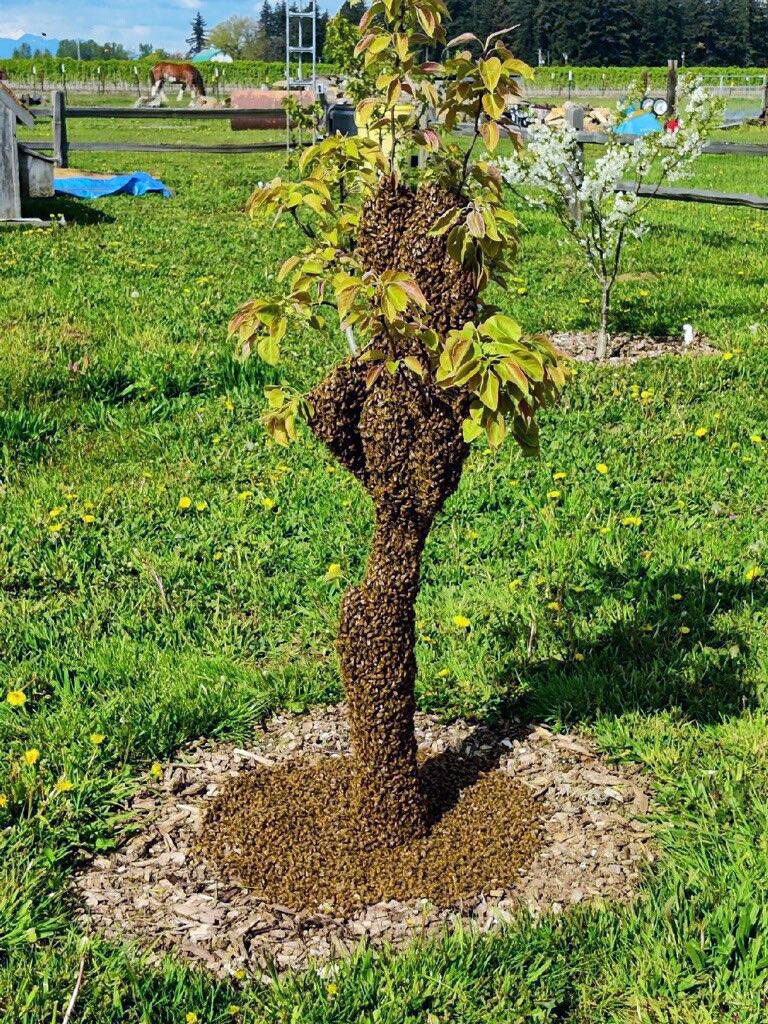
“They’ve got this scrap wood sitting out there, and here’s these beautiful six by six old Doug fir beams eight to ten feet long, and I’m like, man, what are you guys doing with these fellas?” Dan says. They told him it was free. “I’m like, you’re kidding me! So, I started yarding that stuff home.”
Matt Shaver, owner of Foundation Restoration was happy to find a new home for his company’s scraps.
“We’ve looked for an outlet for all of this really usable lumber that’s in good shape, but it’s not suited for structural use. It’s a really cool use of this 100-plus-year-old fir,” he says. “I’m always looking for ways to minimize our impact, and this [is] a really cool way to do it. I love bees, and we need more of them — so, how sweet.”
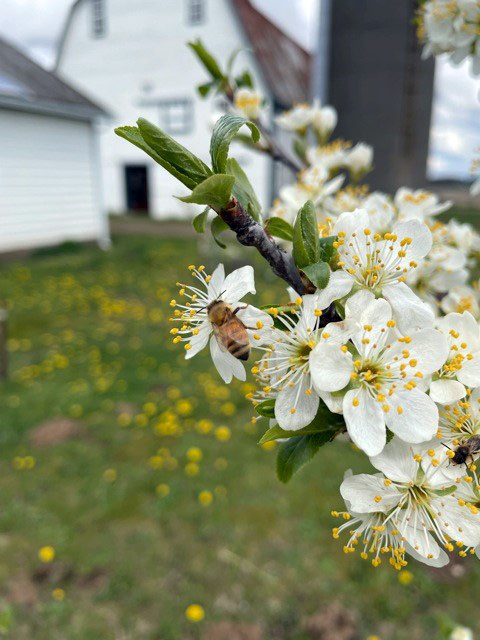
As the number of Dahlberg’s hives grows, so does his learning. In a relatively short time beekeeping, he’s been fortunate to have local resources like Mt. Baker Beekeepers Association. He’s also combed through books and the internet to harvest thousands of years’ worth of beekeeping knowledge. If someone is interested in beekeeping, he recommends getting a local mentor, as bees are very localized; most will stay within two miles of their hive’s location.
In addition to the bees’ essential role in pollination and their delicious and useful creations, Dahlberg thinks we can all learn by simply observing a colony of bees. “You sit there, and you watch a colony of bees do what they do: you have the queen bee, the drone, the worker bee, the scout bee, the nurse bee, the winter bee,” he says. “And they’re doing this amazing work to cooperate, and you get this sweet outcome, like, literally.”
If you notice a swarm that needs moving or would like to try Dahlberg’s honey, the best way to reach him is through his website at www.abeeconnection.com.





























